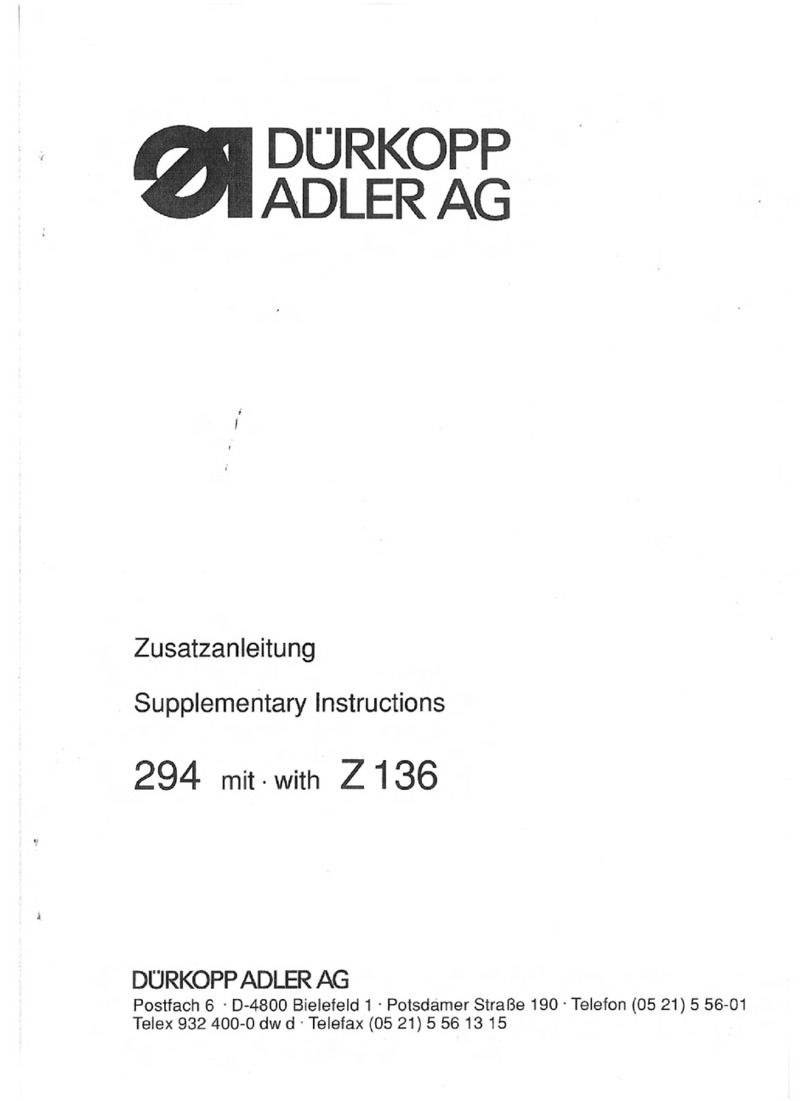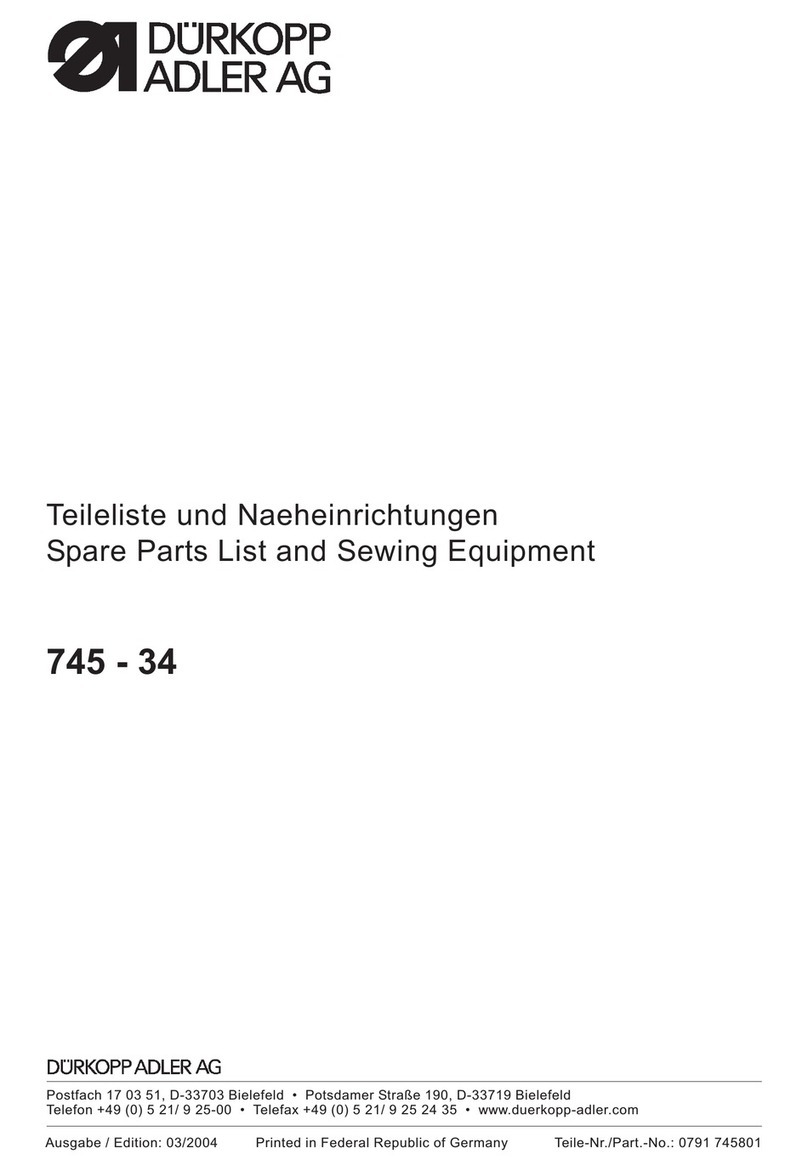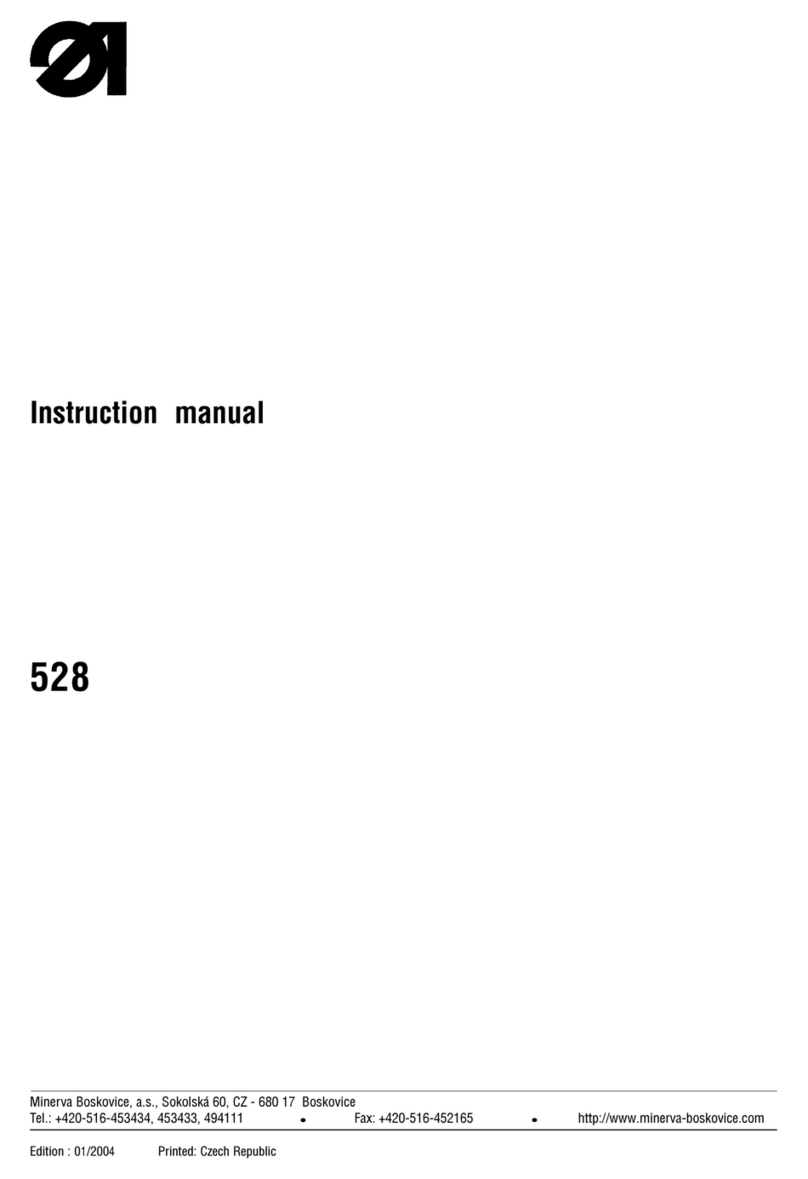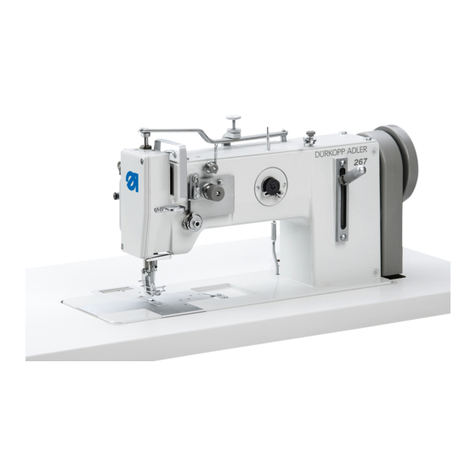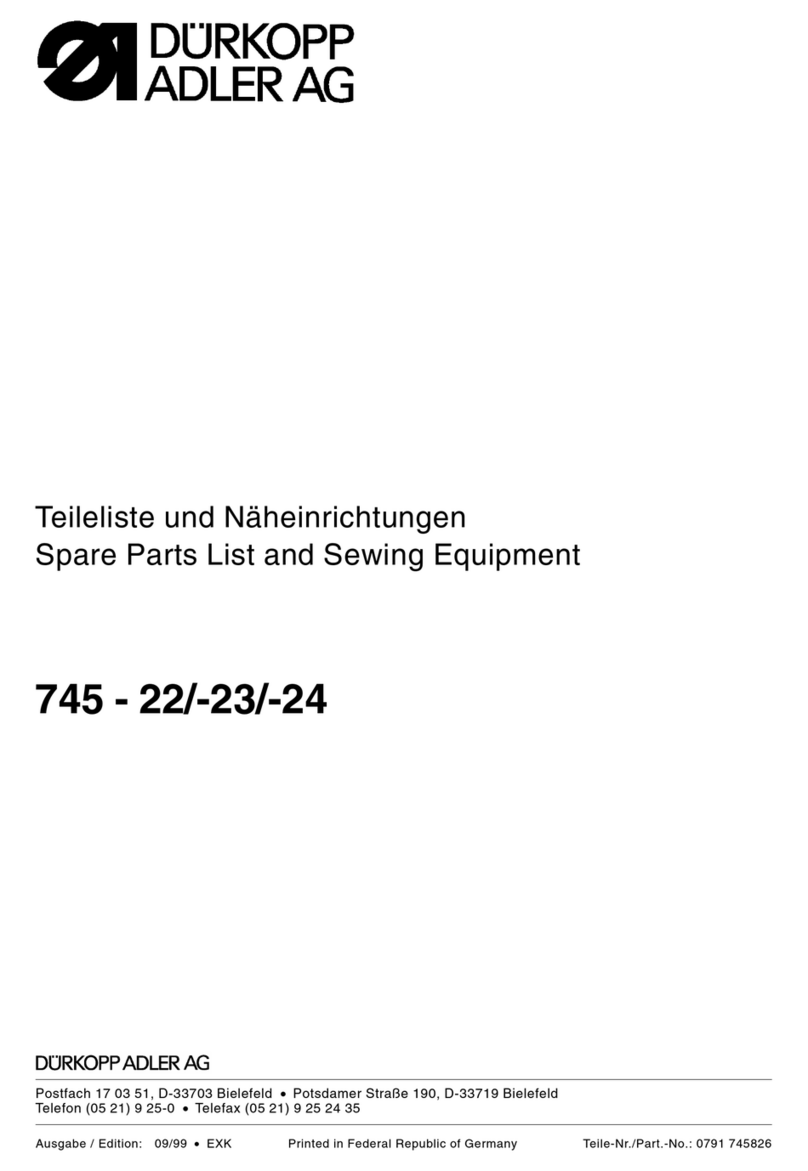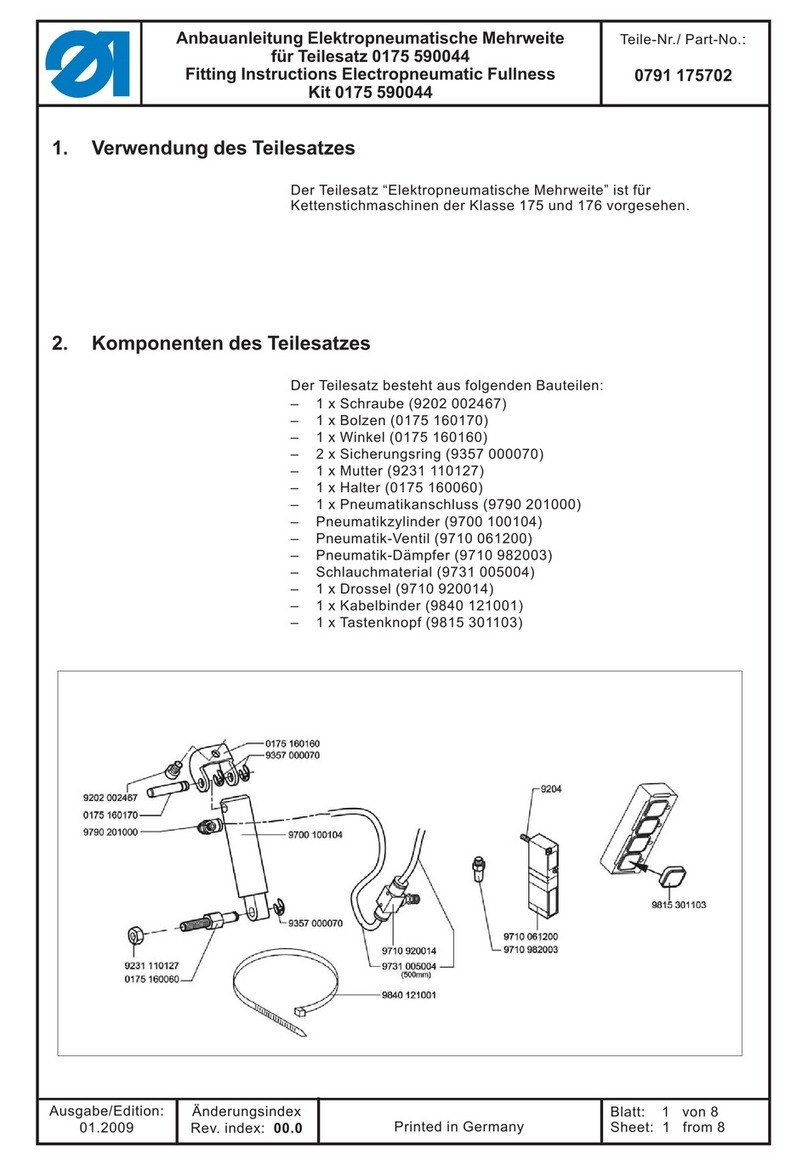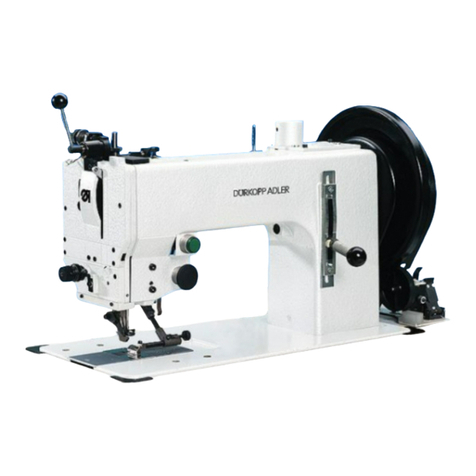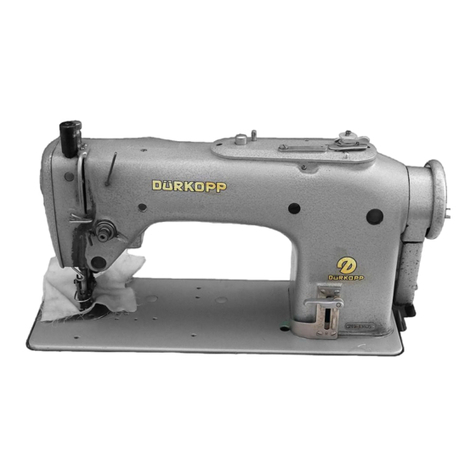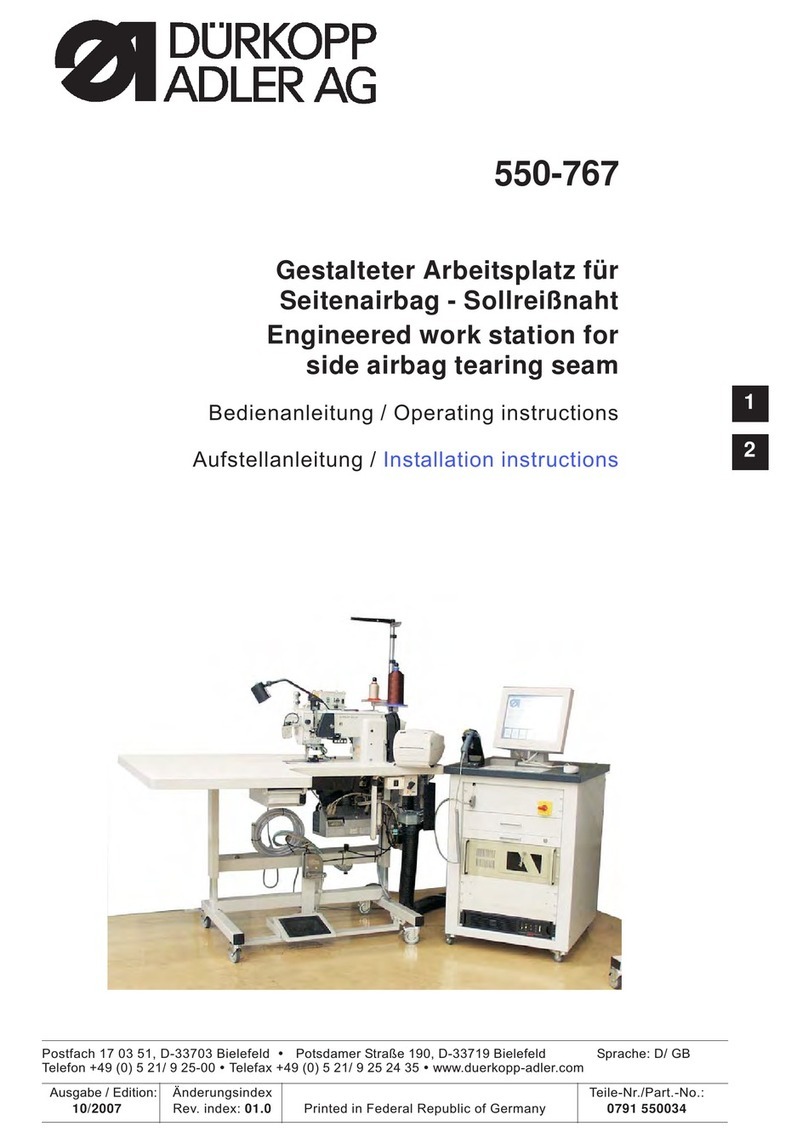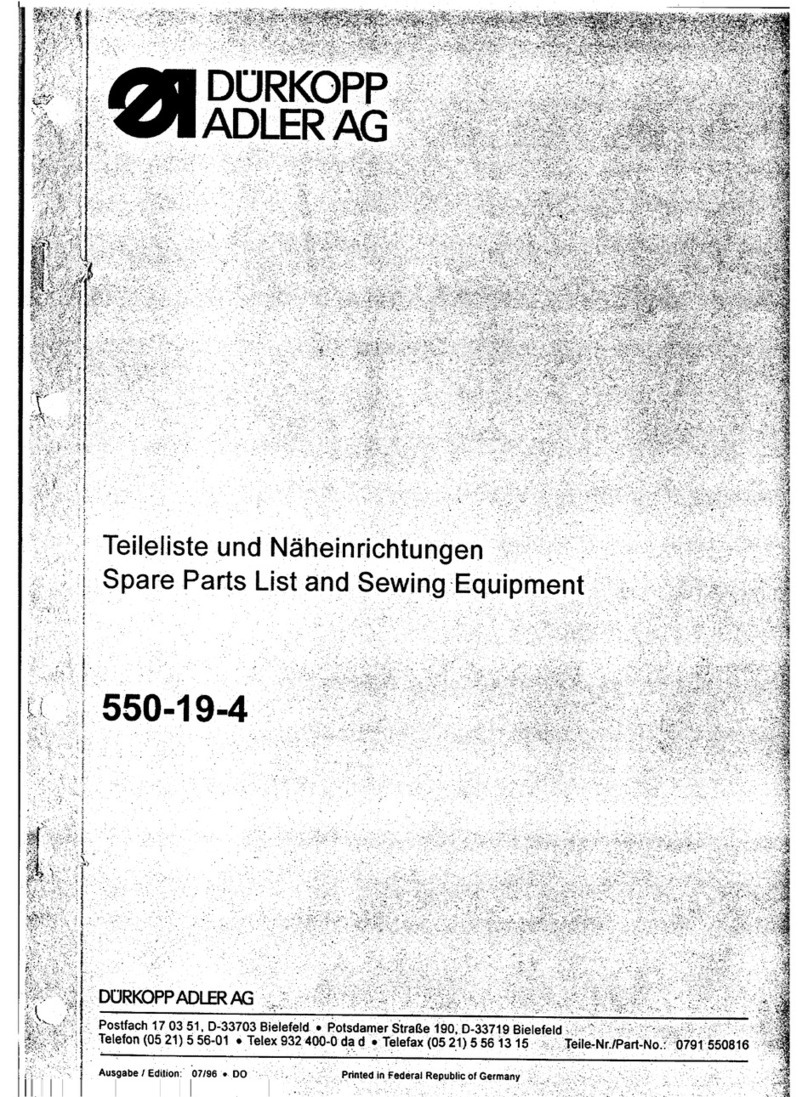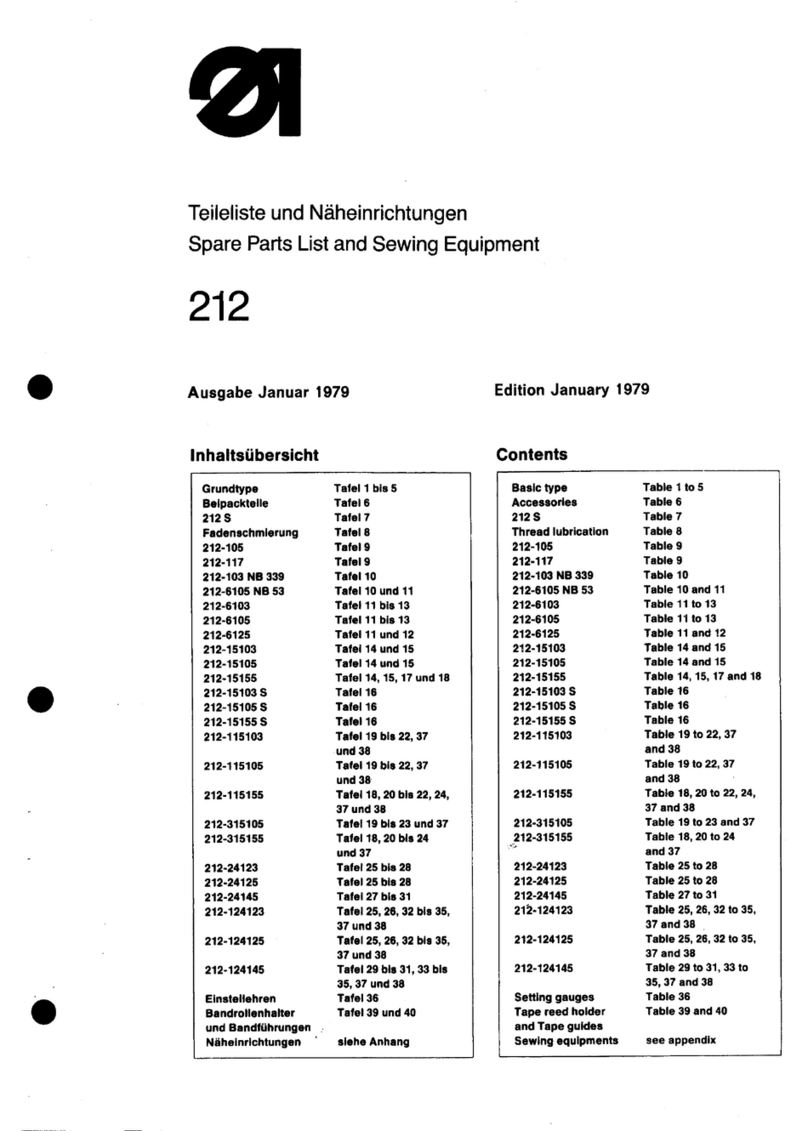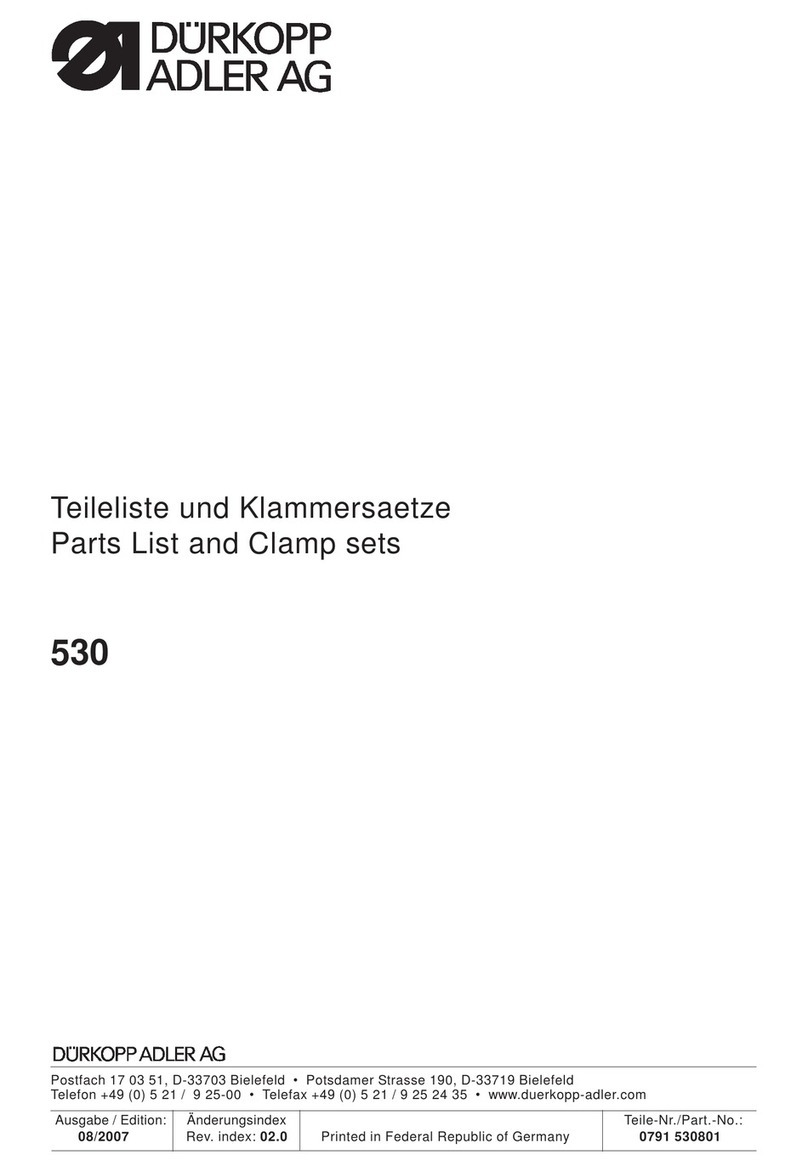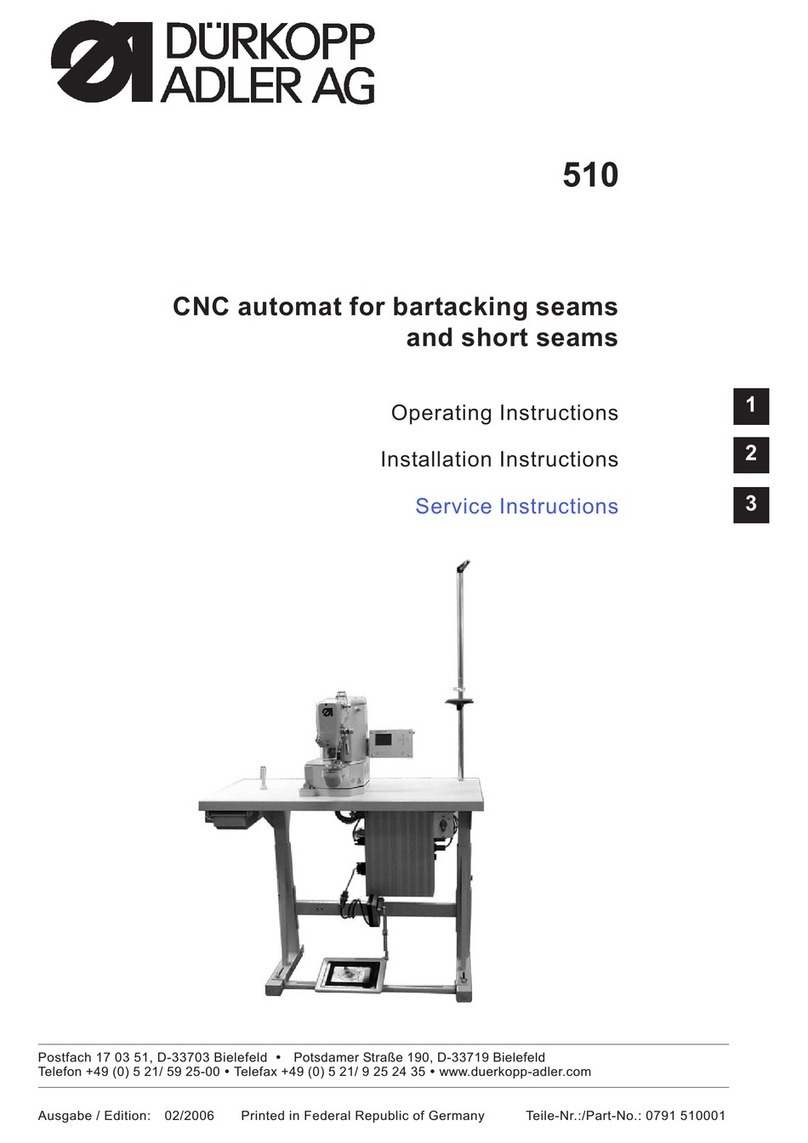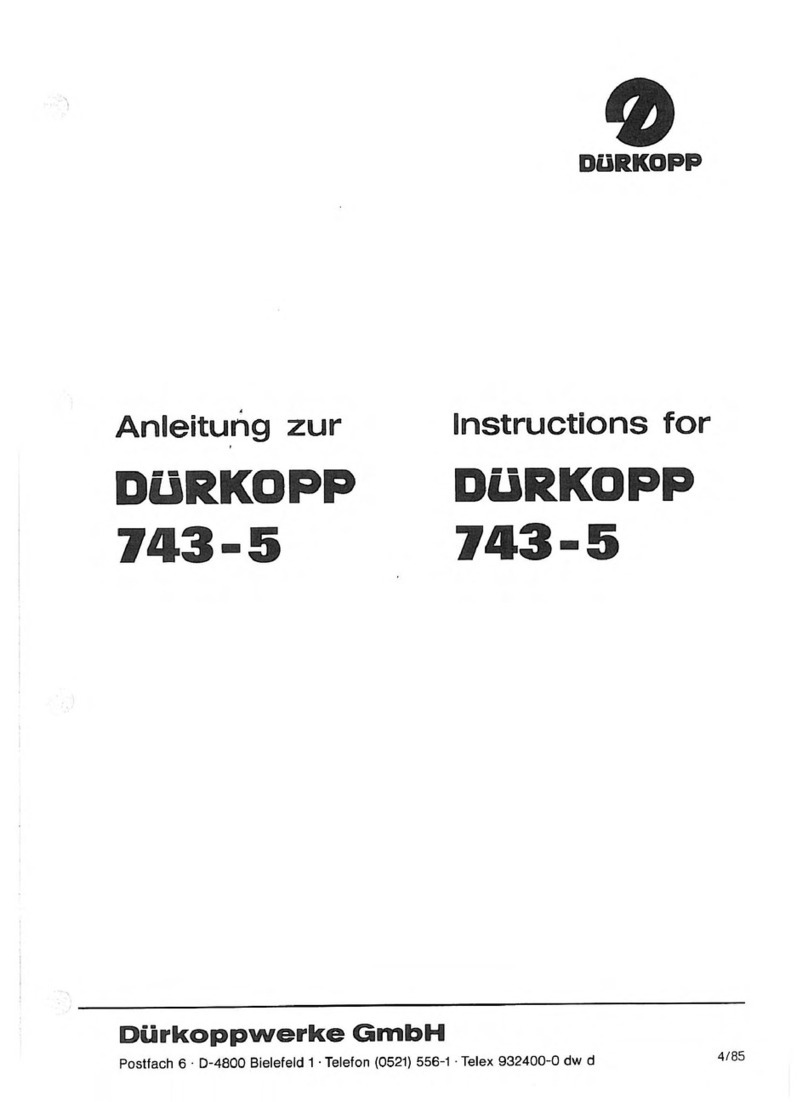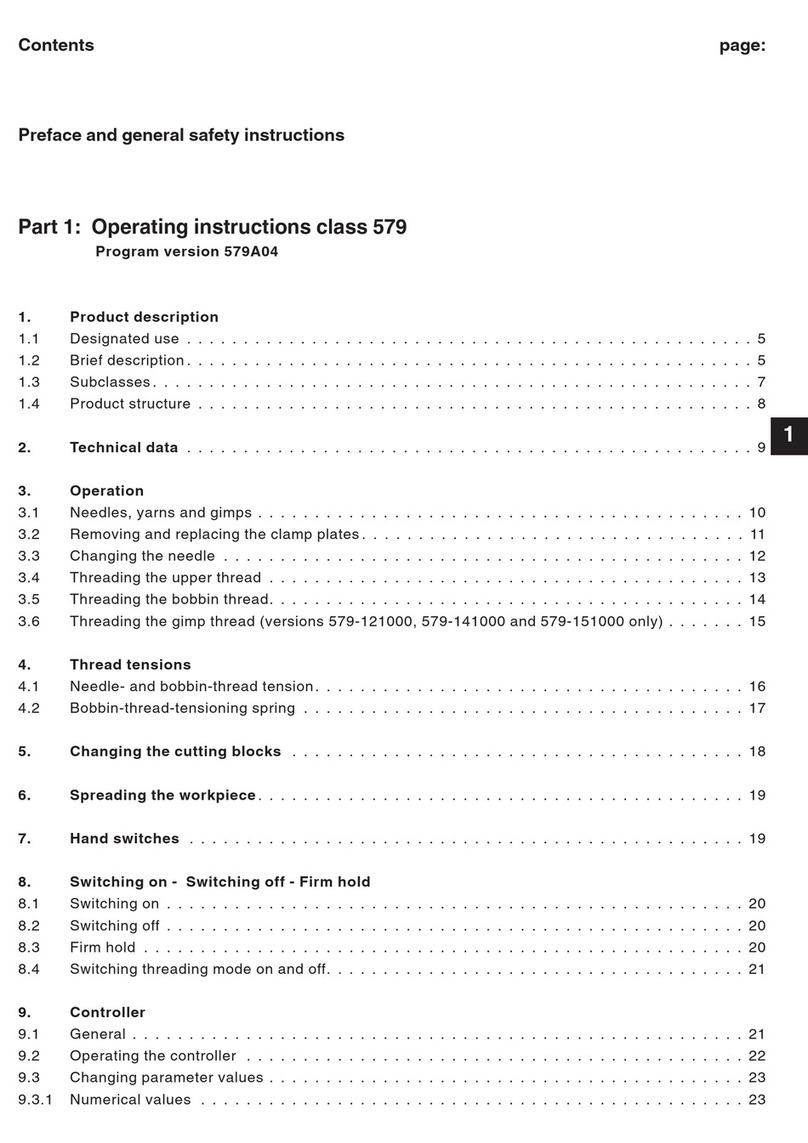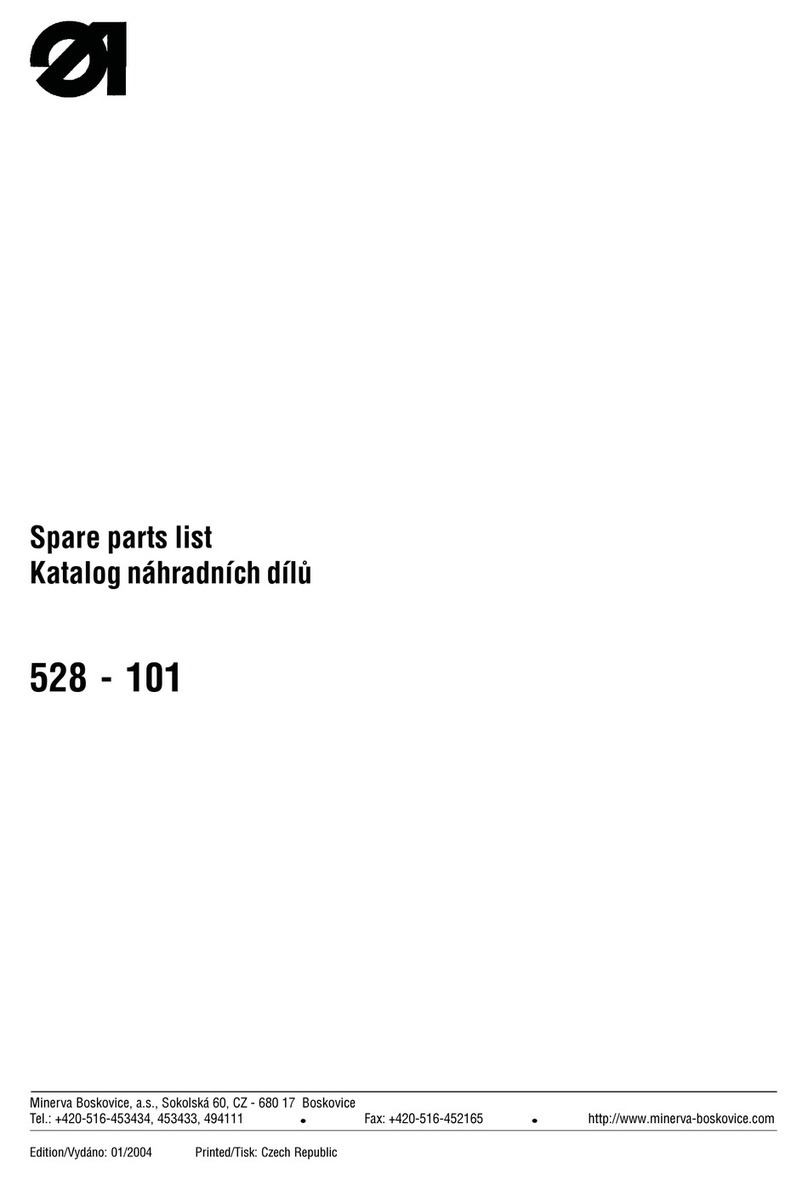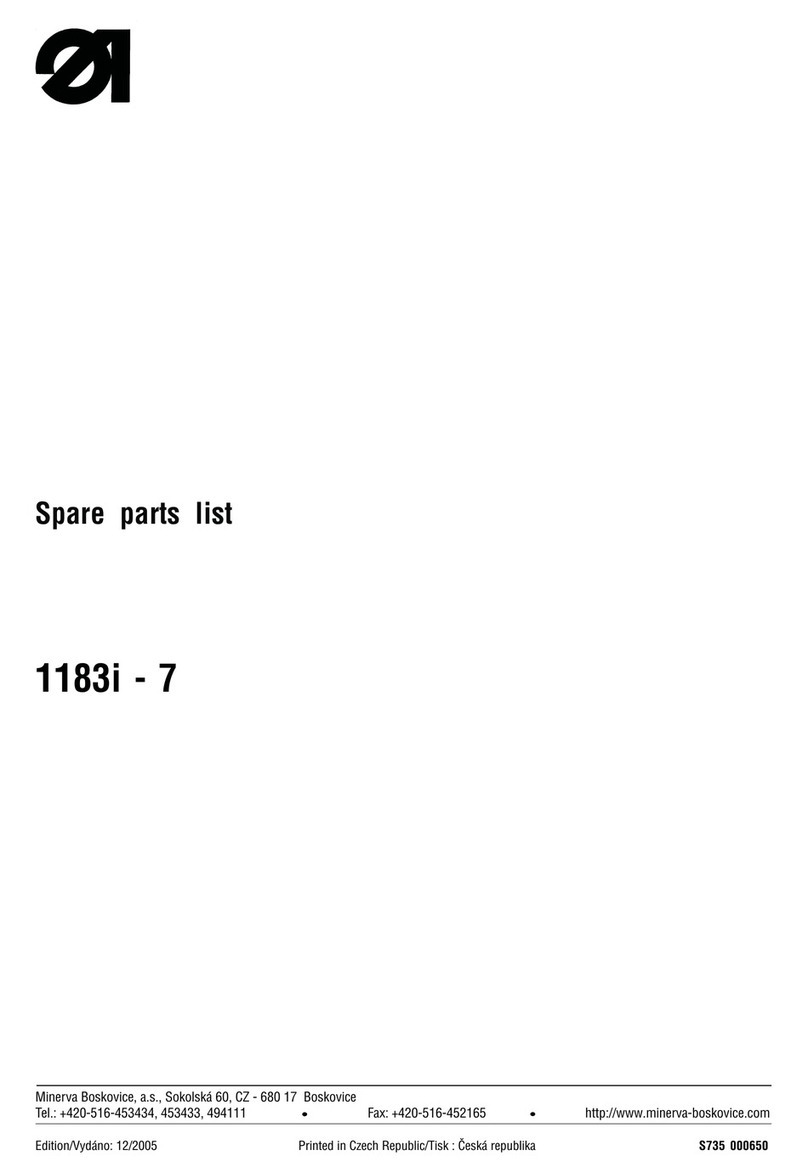5
3.1.10 Dismantling of the hook box
When dismantling the box (1), the supplies of lubricating oil
are to be disconnected first, the fastening scre s unscre ed
and, thereafter, the box is removed.
Caution ! Danger of injur !
S itch off the main s itch! Before starting the
setting operation, ait until the motor stops!
- Unscre the scre s (8) from the oil tank (4) and pull the
box out from the bedplate (7).
- Disconnect the lubricating tubes ith the icks (2) and (3)
from the oil tank (4).
- Loosen only one scre (5).
- Unscre the scre s (6).
- Shift the hook box in the sense of the arro and remove it
out from the machine.
- When mounting it, proceed inversely.
3.2 Needle and thread mechanism
3.2.1 Description
The take-up lever (1) is mounted in ball bearings, both at the
spot of its suspending on the connecting rod (2) and in the
mounting on the loop (12). The take-up lever is of aluminum
and is provided ith a stuck-in eye for t o threads. The
connecting rod (2) is mounted on the eccentric pin (3), by
means of hich the thread mechanism is adjusted according
to the category of stitching. The needle rod holder (4) is
mounted through the pivot (5) in a rotating ay in the arm (6).
In its top part, the holder is guided by the guide pin (7). The
movement for the needle feed is given to it by the connecting
rod (8) driven by the feeding shaft (9). The connecting rod (8)
is mounted by pin (13) ith needle bar holder (4).
The connecting rod (10) of the needle bar (11) on the loop
(12) is mounted in a ball bearing and it is slidingly mounted
on the needle bar carrier. The mechanism is lubricated by means
of a central- ick lubricating system.
3.2.2 To check the handwheel angular adjustment
The hand heel (5) must be situated in its precise position
relative to the needle and thread mechanism. This position is
given by a pin (2), hich locks the connecting rod of the
needle rod (1) through a hole in the arm (3). In this position,
the indicator (6) of the hand heel must sho O. The position
is fixed by the hand heel scre (4) contacting a small flat
surface provided on the upper shaft.
The correct adjustment of the angular position has been car-
ried out at the producers.
Caution ! Danger of injur !
S itch off the main s itch! Before starting the
setting operation, ait until the motor stops!
3.2.3 Height setting of the needle bar
At the moment, hen the hook point passes around the needle,
the upper edge of the needle eye must be about 1 mm belo
the hook point. In an opposite case, it is necessary to set the
height of the needle bar as follo s:
Caution ! Danger of injur !
S itch off the main s itch! Before starting the
setting operation, ait until the motor stops!
- Remove the front guard.
- Loosen the scre (1) of the needle bar carrier
- Set the correct height of the needle bar and tighten ane
the scre (1).
Caution !
An incorrect setting of the needle bar height may
cause the striking of the hook point against the
needle.
6
7
5
5
6
23
4
1
8
2
1
12
3
4
56
7
8
9
13
10
11
1
2
34
5
6
1
1
0o

